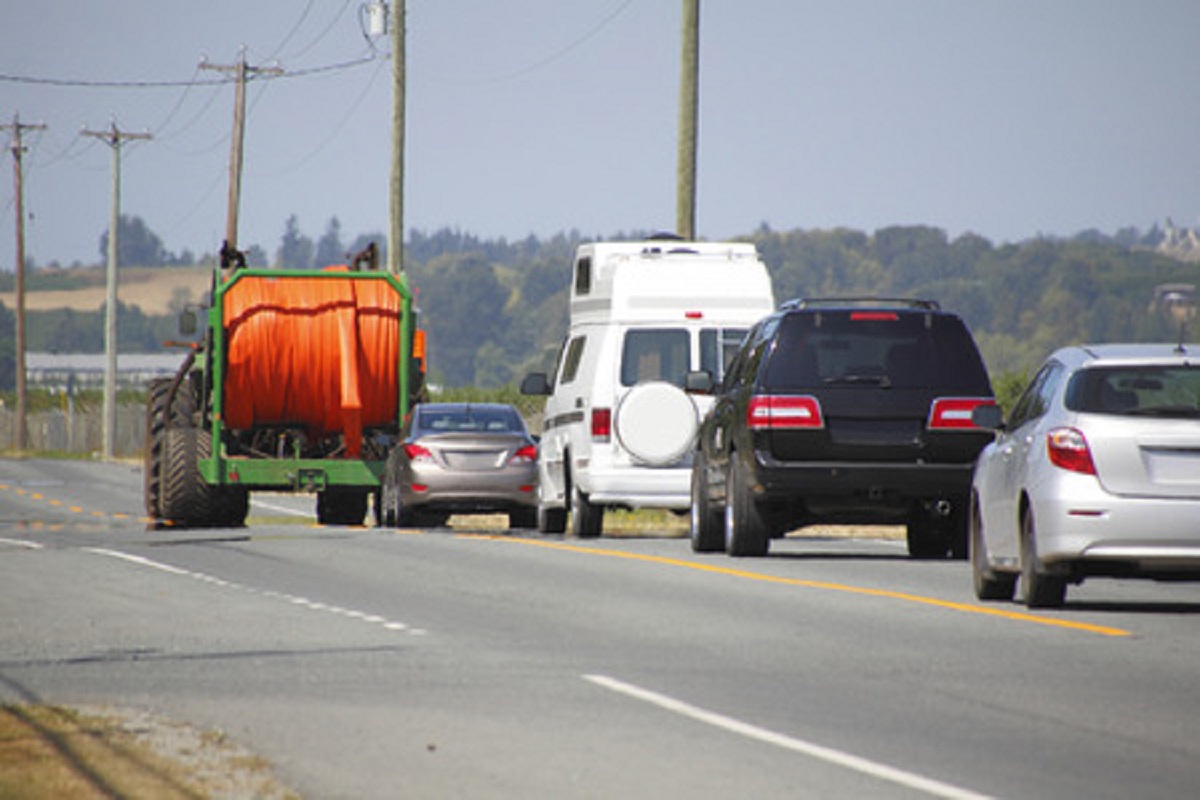If you’re driving and you notice a vehicle with a fluorescent orange triangle with a reflective red border, you should always respond to this sign with caution. A slow-moving vehicle sign (SMV) warns other drivers if a car is moving at 40 mph or less. A vehicle at this speed can be a hazard on roadways, and faster cars are more likely to experience rear end crashes. Construction equipment, farm equipment, street sweepers, forklifts, and low speed vehicles are not made for fast paced areas and usually have this sign. The emblem is located on the back and close to the center.
Only vehicles are legally allowed to display the SMV sign. Bicycles, mopeds, and towed vehicles do not have to display the sign, and most horse-drawn carriages can be outlined with reflective tape. Using a SMV sign on a fixed object like a mailbox or post is strictly prohibited and can lead to a fine. For stationary objects, reflectors and caution signs are best. If you have a vehicle that needs an SMV sign, you can find them at other retail outlets, your local hardware, or a farm supply store.
Noticing this sign can help drivers respond sooner and avoid sudden braking. If you live in a rural area or often commute through agricultural areas, here are a few tips to help you share the road with slow moving vehicles, slow moving farm equipment vehicles, and horse-drawn carriages.
Be Patient
SMV operators will let you pass when there is room for it on the road. Allow time and space to pass. The machinery may be bigger than it appears, and larger vehicles may need more room to pass. Always signal before passing, and while on the road, move to the passing lane ahead of time to make sure the road is clear.
Don’t Blow Horn as a Warning
Large farm machinery like tractors may drown out your horn and be unable to hear your warning. Also, be cautious around places where farm equipment enters or exits. Keep in mind that it takes longer for farm machinery to accelerate.
Go Slowly When Passing Horse Carriages
Approach the carriage slowly and pass only when it’s safe to do so or when you’re motioned by the carriage driver. Never blow your horn as this could frighten the animal and cause erratic behavior. Also, stay alert regarding any hand signals you may receive from the carriage operator and provide plenty of room for carriages traveling in the opposite direction.
Think you or someone you know is in need of Behind the Wheel Training? Training Wheels is a Ventnor driving school specializing in teaching new teen drivers how to stay safe on the road. For more information on our lessons, please click here.
Copyright: modfos / 123RF Stock Photo

